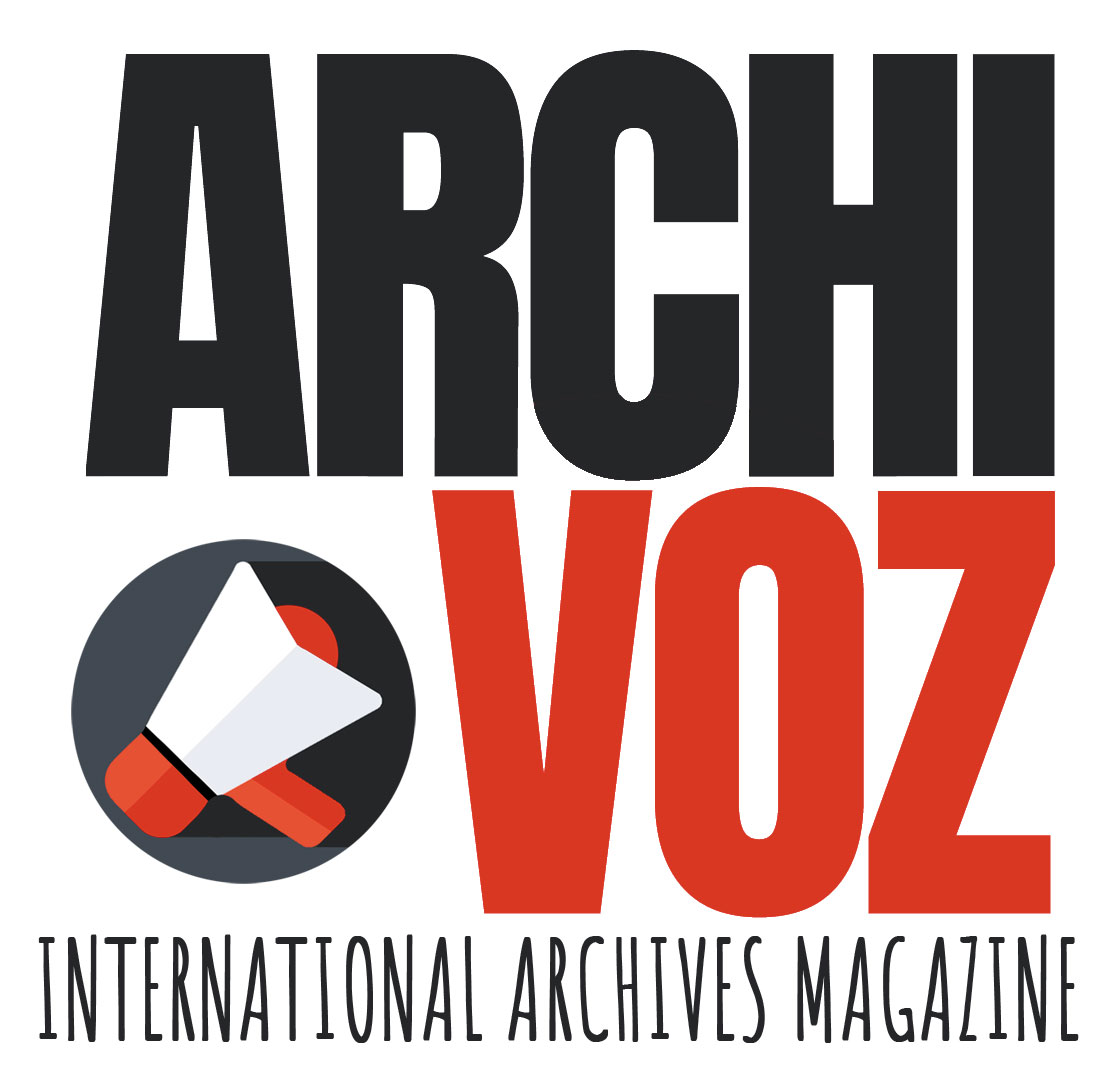Here at Archivoz, we had the honor of interviewing Raffaella Vincenti, who since 2016 has filled the post of Office Head at the Vatican Apostolic Library, a posting officially recognized by Pope Francis in June 2020. Raffaella’s has been a brilliant career, from a Bachelor’s degree in the history of Italian (under Luca Serianni) from the Sapienza University in Rome, to Sapienza’s Special School for Archivists and Librarians (Scuola Speciale Archivisti e Bibliotecari), where she graduated with a thesis on information technologies for archives and libraries. She was the first woman appointed to the Vatican’s Library Council, and since 2010, she has taught Bibliography and Reference Service at the Vatican School of Library Science. Because of the attention her official recognition has received, we believe that the opportunity to learn more about an influential member of the library sciences profession will be of great interest to our readers.
(Archivoz) Thank you very much, Doctor Vincenti, for speaking with us. On June 12, 2020, the Vatican released a statement that read: “Pope Francis appointed Dr. Raffaella Vincenti as office head of the Vatican Apostolic Library. Dr. Vincenti had previously served as secretary of the Library.” The news was picked up immediately in the media as a clear signal, preceded by others—such as that offered by the Holy Father in a Mass celebrated on January 1, 2020—indicating the need to involve women more directly in the Church’s decision-making processes.
(Raffaella Vincenti) I must confess that the news has been somewhat exaggerated in the media, since this is really just confirmation of a role assigned to me by Cardinal Parolin in 2016. Several press agencies have perhaps emphasized my nomination because of the simultaneous, and more relevant, addition of Antonella Sciarrone Alibrandi to the managing board of the Vatican’s Financial Information Authority.
Of course, I’m very grateful to the Holy Father for his official recognition of the appointment; Pope Francis is very aware of the work performed by women in the Holy See. However, it is important to remember that those who originally appointed me to Manager of the Department of Acquisitions (in 2007) and then to the post of General Secretary (in 2012) were two Prefects of the Vatican Library, Raffaele Farina (now Cardinal Farina) and the current prefect, Cesare Pasini. This all took place before the appointment of Cardinal Parolin. They, as well as Father Leonard Boyle, Prefect of the Library from 1984 to 1997, who gave me my first job at the Vatican, chose personnel based on ability without reference to gender. It is true that the Library is an organization characterized by a strong female professional presence, but this is also the case in other Vatican institutions.
(Archivoz) How has your career within the Vatican network developed, and what are your actual work responsibilities as General Secretary of the Vatican Apostolic Library?
(RV) As I mentioned before, it was Prefect Farina (later Cardinal Librarian and Archivist of the Holy Roman Church, from 2007-2012) who in 2007 originally appointed me Head of the Aqcuisitions Department, in charge of acquisition of print materials. My academic background is in the humanities, with a Bachelor’s degree in History of the Italian Language, and a further degree from the Special School for Archivists and Librarians (Scuola Speciale Archivisti e Bibliotecari) at the Sapienza in Rome. I completed my training with degrees in Greek paleography and archival sciences and library science from the Vatican’s School of Library Science.
From a professional point of view, and considering my academic background, my interests have always tended toward library and archival work. Following an initial work experience at the Vatican, in the early ‘90s, I had the opportunity to work in a variety of academic settings (British School at Rome, Ecole Française de Rome, Pontificia Università Lateranense, rete URBS – Unione Romana Biblioteche Scientifiche) and in the archives of various Italian institutions, such as RAI, ISTAT, and the Banca di Roma).
Upon returning to the Vatican, and after a few years as head of the Acquisitions Department, Prefect Monsignor Pasini promoted me to Head of Office of the Secretariat in 2012, a post which involves coordination of a variety of activities primarily with the Prefecture. Among these are: general management of the respective secretariats of the Prefecture, Vice-Prefecture and Cardinal’s Office, besides the Department of Admissions, which liaises with researchers and supervises access to the reading rooms; personnel management; direction of work related to the Reproductions and Rights Office; and coordination of activities related to institutional communications, including management of social media accounts (both in Italian and English) and oversight of content published on the Library’s web site.
(Archivoz) What do you personally think about Pope Francis’ openness to the appointment of women to posts traditionally restricted to men?
(RV) In my opinion, this is a much broader question that speaks to professional competencies and knowledge over and above considerations of gender. I’m happy that women are being considered for positions of authority that have traditionally been reserved for men, but we will only be able to celebrate this as a real accomplishment when these announcements are no longer seen as exceptional or out of the ordinary. Only then will it be possible to set aside discussions of gender equality in favor of professional ability more broadly conceived. The Holy Father speaks frequently of the female “genius,” listing the characteristics which make women deserving of more attention and higher levels of professional responsibilities in the workplace, but in the Library, perhaps due to the strong cultural connotations that in many ways set it apart from other Vatican institutions, this balance was already a reality during the pontificate of Benedict XVI, who appointed many of my female colleagues to the high positions they currently occupy. An example of this would be Barbara Jatta, Director of the Vatican Museums.
Actually, it has been case now for a while that women occupy many positions of authority in the Library, with a level of accomplishment such that their work has served to enrich both the organization’s institutional life and its complex of procedures and relations, which in the end translates into better service to our patrons. As an example that focuses a bit on Spanish-speaking countries, I might—with a deal of pride—mention my colleague (and friend) Ángela Nuñez Gaitán, director of the Library’s Preservation Laboratory. She has inherited, from earlier generations of preservation staff, an important mixture of experience and hands-on knowledge, which she has been able to combine flawlessly with her own knowledge of modern preservation theory and, above all, of the technologies that foster an evolution of departmental practice that protects and preserves our materials while at the same time maintaining a healthy respect for their profoundly historical nature.
(Archivoz) In recent years, the Vatican Library has placed great emphasis on digitization of its manuscript holdings. Are there any related projects planned for the near future?
(RV) We are, at the moment, very focused on the process of digitization itself. However, we have at the same time begun work on a series of related “micro-projects” which have allowed to broaden a bit the horizons of the larger project. For example, as part of the digital reproduction process we have taken on other embedded tasks such as metadata enhancement and, thanks to interoperability standards like IIIF (International Image Interoperability Framework), efforts to enhance effectiveness of collaborative research. We are also exploring more adequate visual optimization technologies, in order to ensure greater detail than can be captured by the naked eye, as well as methodologies for handling extremely delicate materials. Furthermore, we are exploring new formats for long-term conservation of digital materials—like FITS (Flexible Image Transport System )—as part of an ongoing movement toward standardization in the field of cultural heritage. A number of internationally known academic institutions are also working on these initiatives, as pilot programs, that may be applicable to our research needs in the near future.
(Archivoz) How has the Vatican Library been impacted by the COVID-19 pandemic? It is one of the first institutions in the world to reopen its collections to researchers, with of course all due attention to security and health considerations. What do you think of this gesture, which has been so well received by the scientific community?
(RV) At first, we made an effort to move all ordinary workflows to a telecommuting context, which hasn’t always been easy, but thanks to cooperation between our departments we were able to ensure that work that could no be postponed or delayed could be carried out remotely. Later on, once the emergency began to susbside, we were able to formulate a procedure for reopening the Library, with attention to all security and health safeguards, and return to our normal activities. At the same time, we carried out a survey of our spaces in order to evaluate possible risks and limitations, all with the help of an internal health audit that has generated a list of guidelines to follow.
Once we determined that we could safely return to normal functioning while respecting social distancing and health guidelines, and thus afford our researchers to complete their academic year as planned, we reopened our reading rooms to the public. All this required great determination, but we have been rewarded with the gratitude of our patrons, which is, of course, the goal of everything we do.
(Archivoz) What is the profile of the average user of the Library’s collections? What guidelines do you follow regarding acquisitions of new material?
(RV) The majority of our researchers are academics or specialists in the humanities. According to the wishes of those who, from Nicholas V forward, have succeeded to headship of the Church, we are open to all, regardless of race, religion, or political inclinations. Still, we safeguard a particularly delicate and rich heritage which it is our duty to pass down intact to future generations, so access to our collections is curated according to the objectives and specialization of the projects in question. This is the ultimate determinant of who does and does not receive an access card. Naturally, we all also give access to students who have either recently completed or are completing a degree program, as long as they are able to demonstrate the relevance to their studies of the materials requested. As a general rule, we try to balance the twin missions of access and preservation, so we encourage researchers to consult digital copies first, and then, if deemed necessary, to request access to the original (assuming, of course, that the original is in a condition that permits consultation).
Our manuscript collection, along with special materials like prints, photographs, and numismatic artifacts, are historical collections which, with the exception of donations or special purchases, do not receive new accessions. Conversely, our print collection (along with the corresponding digital materials) are open to new acquisitions and constitute the main thrust of the academic activity hosted by our institution. Therefore, there is a department dedicated especially to this work (of which I was the manager from 2007 to 2012). It is part of the larger Printed Books Department, and is responsible for the acquisition of new materials through purchase, donation, or exchange. Inclusion is based on the relationship of a given item to the disciplines represented within our collections; there are subject experts on staff who advise the department manager as to the selection of new titles. This is often done in cooperation with major vendors, who prepare customized catalogs of available titles aimed at particular libraries in order to streamline the selection process.
(Archivoz) In conclusión, can you share with us some of the projects you plan to undertake at the Library in the near future?
(RV) I’ve already mentioned the smaller side projects being undertaken alongside our digitization work, which will probably determine the focus of our ongoing research and development interests. I would add that each initiative requires a constant fundraising effort in order to cover future budgetary needs; our collaborators, not to mention our research and implementation activities, require funding that guarantees more than just the immediate future. This task falls to the Department of Marketing and Development, the manager of which is also a woman. The Prefecture guides its work, providing a point of contact between that office and the Library’s state of affairs so that it can support our financial needs, in a spirit of justice and openness.
Interview conducted by: Marta Pavón Ramírez y Víctor Villapalos




